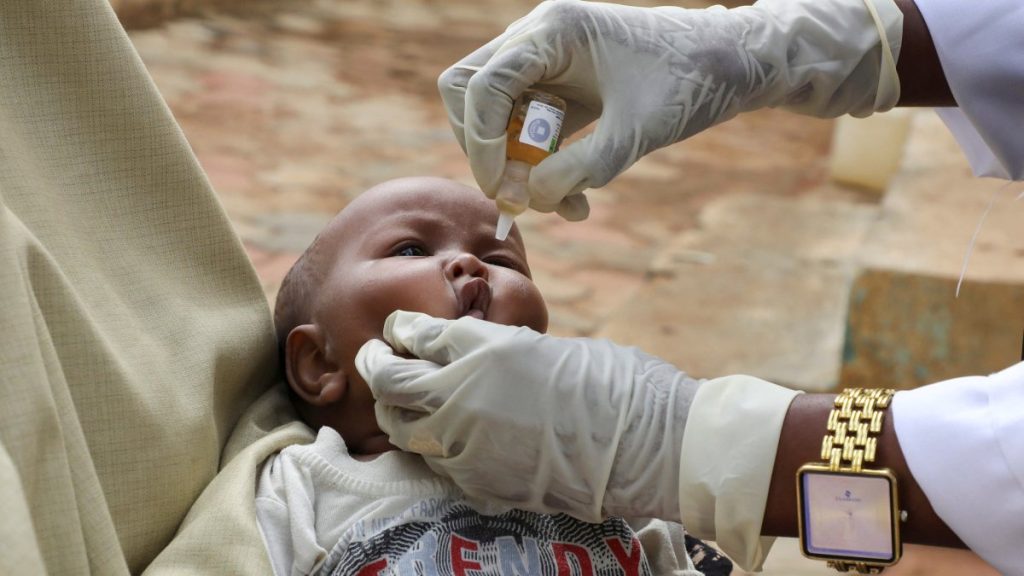Global Infant Immunization Rates Stabilize After Pandemic Disruptions, But Millions Remain Vulnerable Amid Funding Cuts and Misinformation
The United Nations has released a new report on global infant immunization rates, revealing a mixed picture of progress and persistent challenges. While overall coverage has stabilized after declines during the COVID-19 pandemic, millions of children remain unprotected against preventable diseases due to funding shortfalls, vaccine misinformation, and conflict-related disruptions. The report, jointly published by the World Health Organization (WHO) and UNICEF, highlights the urgent need for increased investment and concerted efforts to address the widening immunity gaps, particularly among the most vulnerable populations.
The report indicates that in 2024, 85% of infants globally received three doses of the diphtheria, tetanus, and pertussis (DTP) vaccine, a key indicator of immunization coverage. This represents a modest increase of one percentage point and one million additional children covered compared to 2023. However, nearly 20 million infants still missed at least one DTP dose, including 14.3 million “zero-dose” children who received no vaccinations at all. This figure, while slightly improved from 2023, remains significantly higher than the pre-pandemic level of 12.9 million zero-dose children in 2019.
While acknowledging the modest gains, UN agencies expressed serious concern about the millions of children left unprotected. UNICEF chief Catherine Russell emphasized the need for continued vigilance and action to protect these vulnerable children. WHO Director-General Tedros Adhanom Ghebreyesus warned that the world is “off track” to achieve its goal of 90% essential vaccine coverage by 2030, citing drastic aid cuts and vaccine misinformation as major obstacles. The report underscores the deeply unequal access to vaccines, with conflicts and humanitarian crises further exacerbating the situation.
The report specifically identifies funding cuts, particularly from the United States, as a significant impediment to progress. UNICEF’s immunization chief, Ephrem Lemango, highlighted the impact of these cuts on the organization’s ability to respond to outbreaks in nearly 50 countries. This disruption of essential health services underscores the fragility of global health systems in the face of funding uncertainties, jeopardizing hard-won progress in disease prevention and control.
Vaccine misinformation presents another formidable challenge, eroding public trust in vaccination programs and contributing to dangerous immunity gaps. WHO’s vaccine chief, Kate O’Brien, emphasized the critical need to counter misinformation and rebuild confidence in the safety and effectiveness of vaccines. The report points to the resurgence of measles, a highly contagious disease, as a stark reminder of the consequences of declining vaccination rates. In 2024, 60 countries experienced large measles outbreaks, nearly double the number in 2022.
Despite the overall concerning trends, the report offers some glimmers of hope. Vaccine coverage in the 57 low-income countries supported by the Gavi vaccine alliance reached record levels in 2024. Gavi CEO Dr. Seth Berkley praised this achievement but cautioned against complacency, noting emerging “signs of slippage” in some higher-income countries where coverage had previously been high. This highlights the need for sustained investment and vigilance even in countries with historically strong immunization programs.
The report’s findings underscore the interconnectedness of global health security and the importance of equitable access to life-saving interventions. The UN agencies call for increased and sustained funding for immunization programs, strengthened efforts to combat misinformation, and enhanced global cooperation to address the persistent challenges hindering progress. They emphasize the need for a comprehensive approach that addresses both access barriers and vaccine hesitancy to ensure that all children, regardless of their circumstances, have the opportunity to be protected from preventable diseases. The future of global health security hinges on the world’s collective ability to close these immunity gaps and build a more resilient and equitable future for all children.


